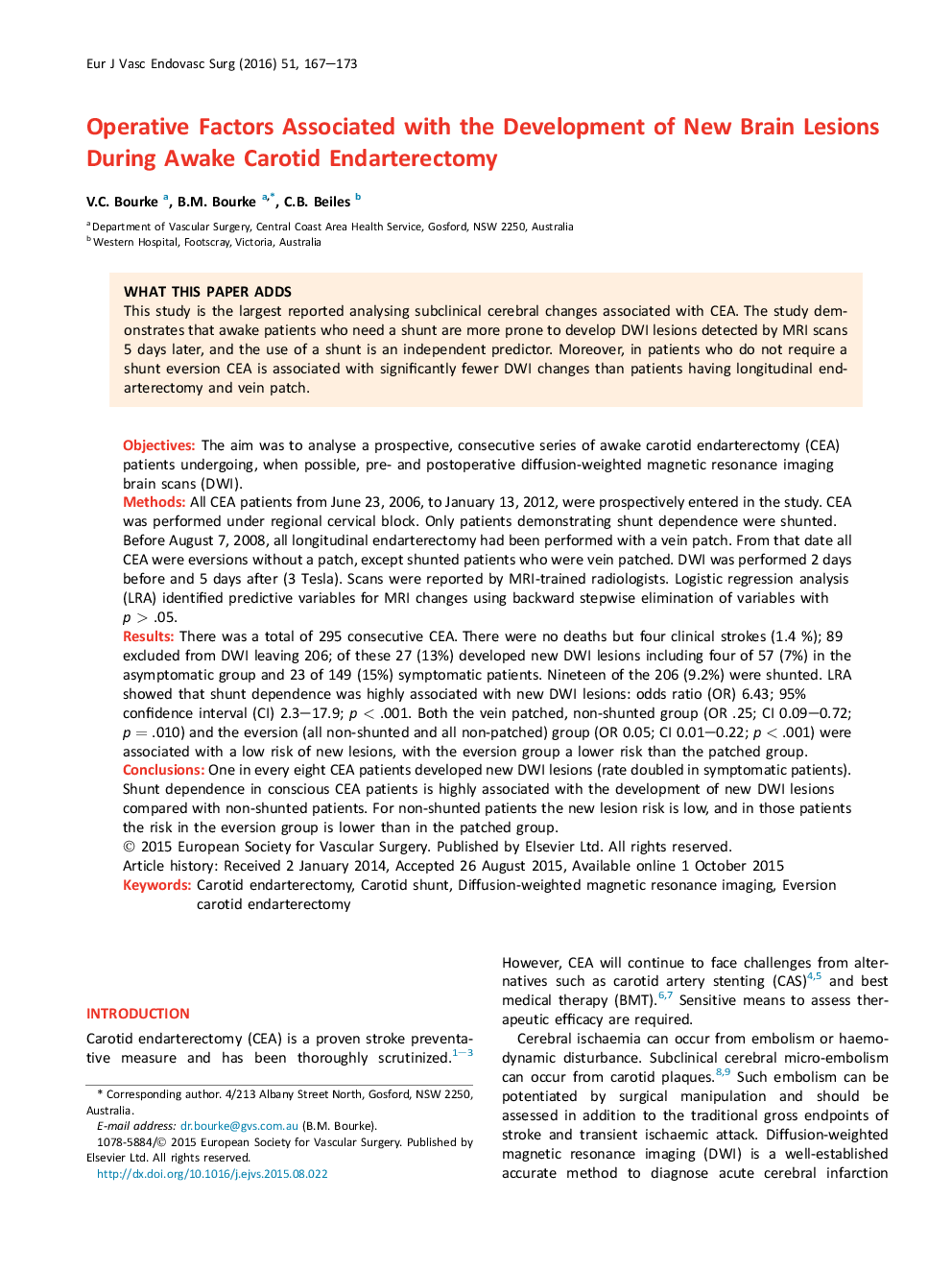| کد مقاله | کد نشریه | سال انتشار | مقاله انگلیسی | نسخه تمام متن |
|---|---|---|---|---|
| 2911704 | 1575433 | 2016 | 7 صفحه PDF | دانلود رایگان |
ObjectivesThe aim was to analyse a prospective, consecutive series of awake carotid endarterectomy (CEA) patients undergoing, when possible, pre- and postoperative diffusion-weighted magnetic resonance imaging brain scans (DWI).MethodsAll CEA patients from June 23, 2006, to January 13, 2012, were prospectively entered in the study. CEA was performed under regional cervical block. Only patients demonstrating shunt dependence were shunted. Before August 7, 2008, all longitudinal endarterectomy had been performed with a vein patch. From that date all CEA were eversions without a patch, except shunted patients who were vein patched. DWI was performed 2 days before and 5 days after (3 Tesla). Scans were reported by MRI-trained radiologists. Logistic regression analysis (LRA) identified predictive variables for MRI changes using backward stepwise elimination of variables with p > .05.ResultsThere was a total of 295 consecutive CEA. There were no deaths but four clinical strokes (1.4 %); 89 excluded from DWI leaving 206; of these 27 (13%) developed new DWI lesions including four of 57 (7%) in the asymptomatic group and 23 of 149 (15%) symptomatic patients. Nineteen of the 206 (9.2%) were shunted. LRA showed that shunt dependence was highly associated with new DWI lesions: odds ratio (OR) 6.43; 95% confidence interval (CI) 2.3–17.9; p < .001. Both the vein patched, non-shunted group (OR .25; CI 0.09–0.72; p = .010) and the eversion (all non-shunted and all non-patched) group (OR 0.05; CI 0.01–0.22; p < .001) were associated with a low risk of new lesions, with the eversion group a lower risk than the patched group.ConclusionsOne in every eight CEA patients developed new DWI lesions (rate doubled in symptomatic patients). Shunt dependence in conscious CEA patients is highly associated with the development of new DWI lesions compared with non-shunted patients. For non-shunted patients the new lesion risk is low, and in those patients the risk in the eversion group is lower than in the patched group.
Journal: European Journal of Vascular and Endovascular Surgery - Volume 51, Issue 2, February 2016, Pages 167–173
